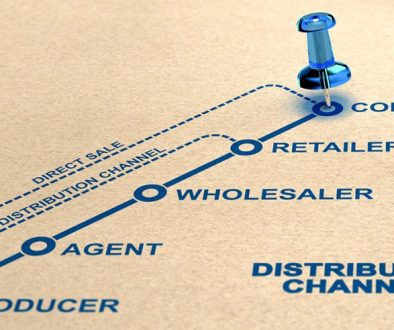Maximising price and profit are what we strive for. But it is not always as easy as it sounds. However, if we work smarter with our marketing it can be achieved.
I had every intention of stopping this Product Pricing Series at 3 articles and moving onto the next topic. However, I was inspired by an article I re-read in the publication Marketing Week. Brands’ pricing shouldn’t be bound by their categories
This article reminded me that when combine our pricing strategies with marketing strategies, they can really be quite powerful. In this article I am going to show you the power in combining value pricing and competitive pricing to maximise our price.
Maximising price: The basics
If you have read the earlier articles in this series, you will know that I love value pricing because it tends to be the method that provides us with the most profit. The more value you give the consumer, the more they will be willing to pay. So, while this is my favourite method, I do know that pricing tends to work best when two or more strategies are used together.
Learn Your Way:
At the end of the last article, I wrote that using cost-plus with competitive pricing alongside value pricing would be the winning combination. Look at the diagram below:
Cost-plus + competitive + value pricing = maximising price
If we take it as standard that you will always be prudent and thorough with your costs, I now want to focus on the other two methods and how we can use these to our advantage. Can we use these to maximise our communication to the consumer? How can our price benefit from it? How do we maximise price?
Maximising price: It’s all relative
As part of your value pricing journey, you need to discover what a consumer values. The value that your product gives is based on how the consumer perceives it. Do they see the value in the same way as you do? Value can be so subjective so you must do all you can to help them.
This is where competitive pricing can come in because consumers perceive price and value relative to similar products. We all look at what else we can buy for the same price or that meets the same need. We compare and contrast. It’s all relative.
The Marketing Week article highlighted an example of how the shopper perceives value as they do their weekly shop in a supermarket.
For example, imagine a consumer walks down the soft drinks and squash aisle. In this aisle most of the products are £5 or less. They see a new product. They look at the price. If they see the 700ml bottle is £24 they are likely to baulk at the price, no matter how pretty the bottle or natural the ingredients. How can something 5-10 times more expensive than all the other products next to it be worth it?
However, now imagine that same consumer is in the spirits aisle. Here £20, £30, £40 price points are the norm. They see a non-alcoholic alternative and look at the price. £24 may seem potentially reasonable. Still pricey perhaps but not out of this world expensive.
It’s all relative.
This is precisely what the likes of Seedlip have done and they have done it excellently.
Maximising price: Think outside your competitive set.
If you want to change your pricing model you have to change your comparison set. Seedlip are not unique in managing pricing expectations differently. It is open to almost anyone who wants to challenge the perceived norms.
Do you remember in the competitive pricing article when I wrote about lining up your competitors in terms of price and quality? And then choosing where you fit in?

Well, this is similar but when you do the exercise it is not simply about gathering data about any competitors. It’s about finding the right competitors.
Let me give you a real-life example:
Need help with pricing?
Get high value learning for only £1
When I was working on the Peroni brand we did this exercise. We did not just compare the brand to other world beers, nor simply to all beers but we compared it to spirits too. In fact, we looked at what the consumer could choose to drink when they walked into a bar and took them all as potential competitors.
We sorted the brands not just by price, but on a premium scale or perceived value scale. Peroni was then slotted in at the higher end of the scale in the same groupings as the likes of Grey Goose Vodka or Tanqueray 10 gin. When the sales team presented this study to buyers and bar owners, they could then compare Peroni to the whole drinks’ category. They did not have to only compare Peroni to other beer brands where it was already the most expensive. This changed the perception of value and allowed for the beer to be priced accordingly.
Follow through with conviction
However, you can’t just say you are like a different competitor set; you must act like it too. If you want a consumer to believe that your product has the same value as an alternative competitor, you must behave like that set too. If we go back to the Seedlip example they act in line with their alcohol-based competitors rather than their soft drink ones. They attend the same trade shows, have top mixologists use their products in cocktails. You can see it in their advertising, packaging, communications, and pricing.
So, if you talk the talk, you must walk the walk. Your price should always match every other element of your strategy.
Maximising Price: Other options
If you believe that using a completely different competitive set to highlight value to your consumer is a step too far, there are alternative strategies for you. Maximising price is still an option for you. You could go down the route of producing a premium version of your own brand instead. Good, better, best pricing is a proven pricing model.
Why? Because it’s all relative.
Next time you are in a supermarket (or doing your online shop!) look at brands that have done this. I am sure you will find hundreds of examples from supermarket own brands, to cereal and tea. If you produce a premium range with higher prices, your existing range looks like it gives more value in comparison.
How can you do something similar to change the perception of your product so you can price it for the value it truly delivers?
Maximising Price: Summing up
There are of course many ways to combine pricing strategies to your advantage. Many ways to maximise price. Combining Value and Competitive pricing can help communicate the value you are providing whilst staying competitive and profitable.
Take inspiration from what you see around you. Don’t be afraid to push boundaries. Afterall, pricing and value is relative so choose your competitive set wisely.
What next?
If you need a few pointers on how to choose a strategy or some extra pricing guidance sign up to the Pricing Learning Hub for access to pricing calculators, fact sheets, how-to guides and more. We even have a free pricing strategy selector tool that helps give the pricing direction you need.
Alternatively, if you have a specific question, then our Pricing Power Hours can help un-muddle you and set you on the right pricing track.
Pricing Learning Hub
Improve your pricing strategies, tactics and profits, gain confidence and reduce the stress of price setting, price increases and discounting.
Join our Pricing Learning Hub and get exclusive access to a range of tools, articles, podcasts and videos by experts with 15+ years in top FMCGs. Join today for only £1.









